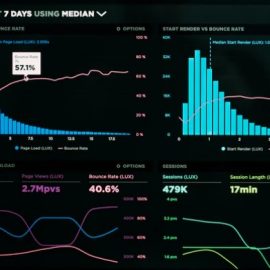

This article is an excerpt from the Shortform book guide to "Find Your Why" by Simon Sinek, David Mead, Peter Docker. Shortform has the world's best summaries and analyses of books you should be reading.
Like this article? Sign up for a free trial here .
What team motivation ideas work the best? How do you foster long-lasting motivation in a team?
Find Your Why author Simon Sinek says your energy and commitment to your purpose are contagious, so having clarity on it helps you pitch your ideas in a way that’s more authentic and enticing to others. By holding a purpose discussion to find your team’s common purpose, you can achieve long-term team motivation, according to Sinek.
Read on to learn Sinek’s team motivation idea for creating long-term motivation through purpose discussions.
The Team Purpose Discussion
To determine your Why and come up with a written statement, Sinek and his co-authors created a step-by-step process that individuals and groups can follow in a group discussion or workshop. Sinek’s process to finding purpose helps you or your team explore past experiences for insight into ideas for team motivation and what moves them.
According to Sinek, the purpose discussion is a great team motivation idea because you’ll identify important stories in your personal or company experience, share them with a partner or group facilitator, and pull out themes. You’ll then distill these themes to write your Why or purpose statement.
(Shortform note: While Sinek argues that you can find your purpose by looking inward, Viktor Frankl argues the opposite in Man’s Search for Meaning. He contends that you can only find meaning out in the world—in other people or causes—not in your own mind.)
Exercise: Prepare for a Team Purpose Discussion
Follow Sinek’s steps to prepare for a team purpose discussion.
- Describe the team you’ll be working with. Is it the entire organization or a smaller team within a larger one? Based on your observations, are team members disconnected from their purpose, or are they just struggling to put it into words? How can you tell?
- What problems do you think the team needs to address before the purpose discussion?
- List three to five team members who could facilitate the discussion, and note why each would be a good fit. What can you do this week to reach out to them and see if they’d be up for the challenge?
- List the people you’d like to invite to the discussion. Consider the area of the team each represents so you can ensure you have vertical and horizontal diversity.
Mine Their Stories for Team Motivation Ideas
Through a purpose discussion, the goal is to extract two key insights from stories participants will share: the core action the team consistently takes, and the effect the action has on others. These actions underpin your team’s motivation for doing the work they do. The authors suggest dividing participants into groups that represent the diversity in the room. Avoid teaming people up with the colleagues they work with every day. (Shortform note: As David Epstein argues in Range, people from diverse backgrounds bring different ideas and values to the table, which results in new insights.)
To extract the first insight, begin by asking participants to share with their small groups stories of when they took pride in being part of the team to create ideas for team motivation. Then, ask each small group to share their three most emotionally impactful stories with the rest of the team. Ask follow-up questions after each story to uncover its significance. (Shortform note: If a team is struggling to come up with examples, help reframe their thoughts by considering proud moments that they may overlook. In The Power of Moments, Chip and Dan Heath suggest paying attention to small wins and focusing on progress instead of results.)
Ask participants to choose an action verb or phrase for each story they have shared. The verbs should capture the core actions the team took. Finally, ask each group to share what they’ve written while you take notes, highlighting repeated phrases or expressions. (Shortform note: If the team isn’t sure how to translate stories into action verbs or phrases, remind them of another process in which they use verbs and phrases to solidify ideas: writing objectives in action-oriented language. The logic behind both processes is the same. Attaching action words to stories makes the stories more concrete—similar to how action verbs help make objectives actionable, as John Doerr instructs in Measure What Matters.)
To extract the second insight, ask the small groups to share stories of people whose lives changed for the better thanks to the team. Then, ask each group to share their responses with the full group while you write down a phrase from each response that captures the essence of the team’s effect on others; note repeated phrases. (Shortform note: Since the authors encourage participants to focus on the feelings the team generates, rather than the product or services they provide, this could unintentionally make an organization seem more virtuous than it is. Since customers are savvy—and as Sinek argues in Start With Why, they can detect manipulation—you shouldn’t overlook the less sanitized parts of the work you do. This will help ensure your purpose statement is truthful.)
Draft the Purpose Statement
The third stage is to write the first draft of a purpose statement. Sinek emphasizes that the statement should be actionable and resonate with the team’s ideas for motivation, but the wording doesn’t need to be perfect.
To begin, the facilitator should show participants a sample purpose statement and explain where each part of the statement will come from: The team’s core actions will shape the first part of the statement; the team’s effects on others will shape the second part.
Ask small groups to draft a purpose statement using the notes from the previous conversations, particularly the repeated phrases and ideas. Each small group should do their own draft. Finally, ask small groups to share their drafts out loud so that all the participants together can decide whether to keep one of the drafts or combine them. For example, two small groups could come up with these purpose statements for a financial services institution: 1) “Empower customers to secure their financial goals,” and 2) “Give people the tools they need to build their financial futures.” The full group might then combine the statements as follows: “Empower customers to secure their financial futures.”
Save all the notes you didn’t use in the final draft of the purpose statement. These are the themes you will use to determine your How.
| Team Motivation: Ideas for Effective Collaboration To help motivate your team to collaborate effectively, facilitators might want to frame the process using the ideas Kim Scott outlines in Radical Candor: – Listening. Make sure everyone listens to each other and encourage them to build on each others’ ideas. – Clarifying. Help small groups refine their ideas before sharing them with the rest of the participants. If you catch something that’s unclear, encourage them to revise it before presenting it so others will assess their ideas fairly. – Debating. Encourage respectful debating in the small groups and in the larger group. You can do this by stopping a conversation if it becomes about “winning” rather than exchanging ideas, or if people seem to get tired of the discussion. – Deciding. After some debate, transition to decision-making. Remember to leave the decision in the participants’ hands—the facilitator guides but doesn’t participate in the choice. |

———End of Preview———
Like what you just read? Read the rest of the world's best book summary and analysis of Simon Sinek, David Mead, Peter Docker's "Find Your Why" at Shortform .
Here's what you'll find in our full Find Your Why summary :
- Simon Sinek’s steps to understanding and living your purpose and your organization’s
- How to create and write your purpose statement
- What to do after you find your Why: Determine your How






